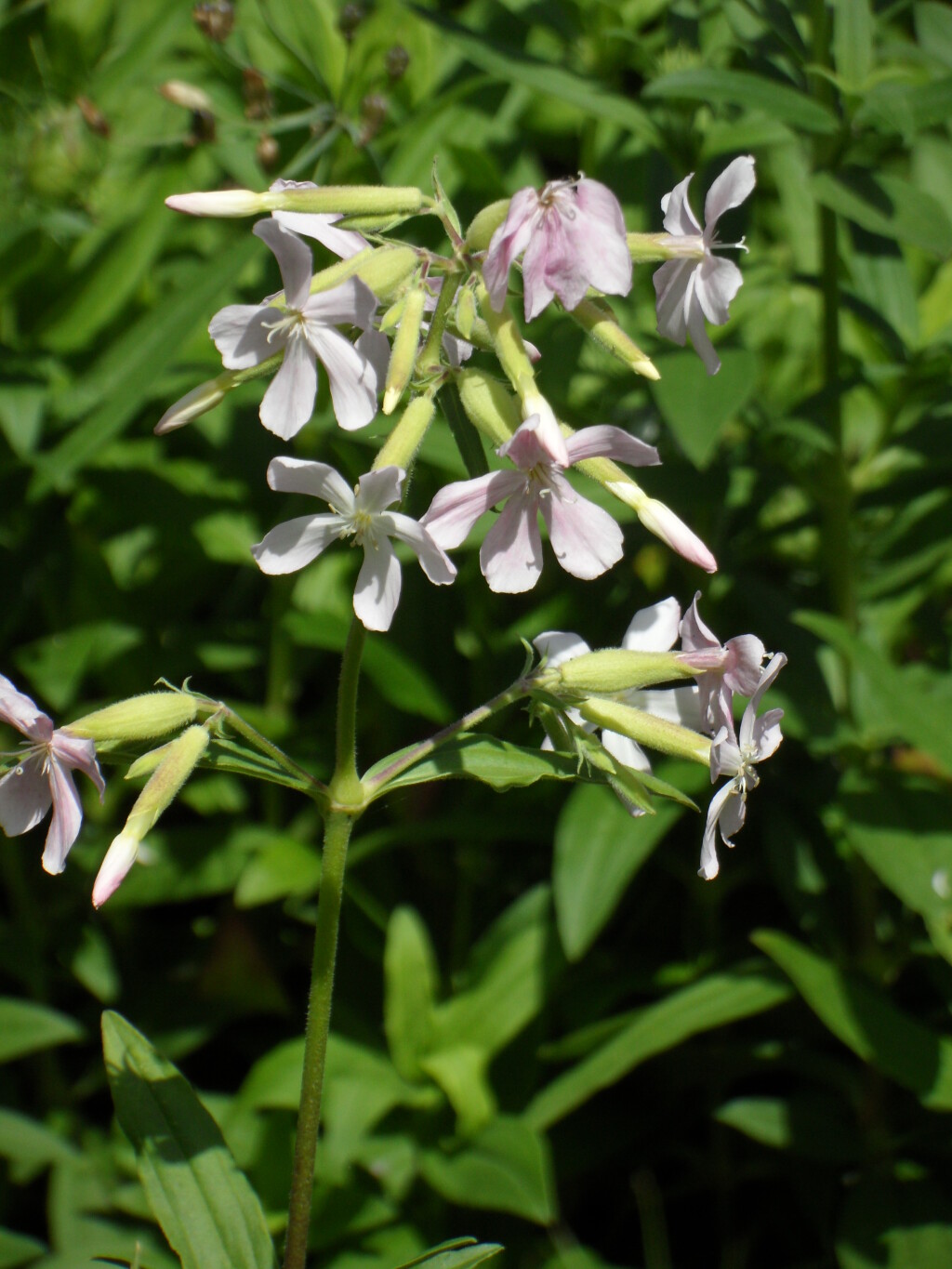Saponaria officinalis
L. Common SoapwortPerennial; usually glabrous. Stem erect, robust, 30–90 cm high. Leaves sessile, elliptic to ovate-lanceolate, 25–100 mm long, 6–30 mm wide, acute, conspicuously 3-veined. Inflorescence terminal, condensed, 6–25-flowered; bracts herbaceous; pedicels 1–5 mm long; calyx narrowly cylindric-oblong, becoming ovoid in fruit, 17–20 mm long, 2-lipped, glabrous or pubescent, green or reddish, calyx-lobes short, triangular-acute; petal-limb c. 10 mm long, white to pink, entire or slightly emarginate; styles 2. Capsule ovoid-oblong, as long as calyx; seeds discoid-reniform, black, bluntly tuberculate, c. 4 mm diam. Flowers Jan.–Feb.
GipP, OtP, CVU, EGL, EGU, HNF, VAlp. Also naturalised NSW, ACT. Native to Europe, western Asia. A widespread weed of waste ground and streamsides in south-eastern Australia. Abundant along sandy shores of the Snowy and Genoa Rivers in eastern Victoria.
Adams, L.G. (1996). Caryophyllaceae. In: Walsh, N.G.; Entwisle, T.J., Flora of Victoria Vol. 3, Dicotyledons Winteraceae to Myrtaceae, pp. 228–271. Inkata Press, Melbourne.
 Spinning
Spinning


